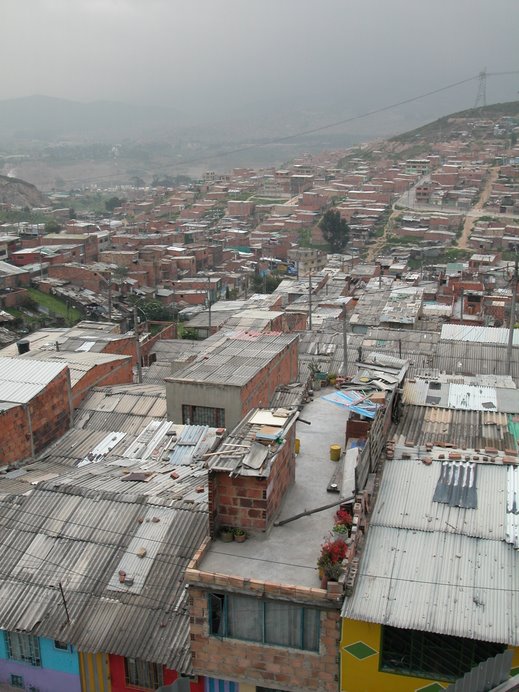 |
| Simon Bolivar, swordless, on Plaza Bolivar. |
 |
| Simon's swordless sword hand. |
With the sort of dramatic, media-friendly flourish the M-19 were known for, they then announced
that 'Bolivar's sword had returned to battle' - presumably for democracy, sovereignty and social justice.
In the M-19's hands, the sword seems to have been hidden in a brothel, in the homes of various Colombian artists and intellectuals, and then smuggled to revolutionary Cuba. Meanwhile, after several more dramatic actions, the M-19's career turned tragic in 1985 when its assault on the Justice Palace became a bloodbath.
When the M-19 signed a peace treaty with the government and demobilized in 1991, its leaders gave back to the Colombian nation what they claimed was the same sword they had stolen.
Today may be a less dramatic and idealistic time for Coombia. So, perhaps appropriately, one of Bolivar's swords was stolen last week, apparently for much more pragmatic reasons.
 |
| A missing manhole cover on Plaza San Victorino, which someone has covered with a piece of concrete. |
It's a mystery how the sword was stolen on Colombia's most important public plaza, which is
 |
| A plastic non-recyclable manhole cover on Jimenez Ave., near where a girl fell thru and drowned several years ago. |
Sadly, the incident was no aberration. In Bogotá, virtually any piece of metal which can be picked up or ripped away from its moorings will be, often by crack addicts desperate to buy another hit.
The other day, the doorhandle disappeared from our house. A few years ago, when I lived around the corner, someone ripped stole our metal plate house number.
Unfortunately, metal theft can cause more than just inconvenience. A couple of years ago, a little girl fell into a manhole whose cover had been stolen and drowned in an underground river.
In a city with lots of poverty and drug addiction and poor law enforcement, this is not an easy problem to solve. But authorities could make selling stolen scrap more difficult by doing sting operations. Since nobody has the right to sell a city manhole cover, any scrap dealer who buys one is committing a crime, and should have his business shut down.
 |
| Several years ago, someone stole one of Saint Frances de Assisi's adoring animals from a plaza in north Bogotá. Was the poor metal deer melted down? |
















































